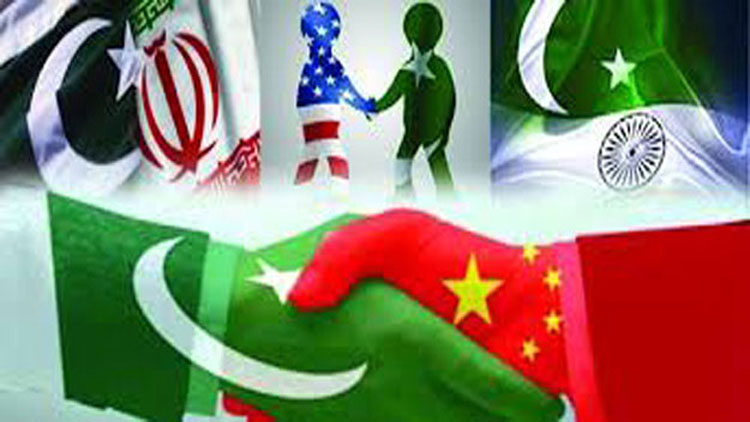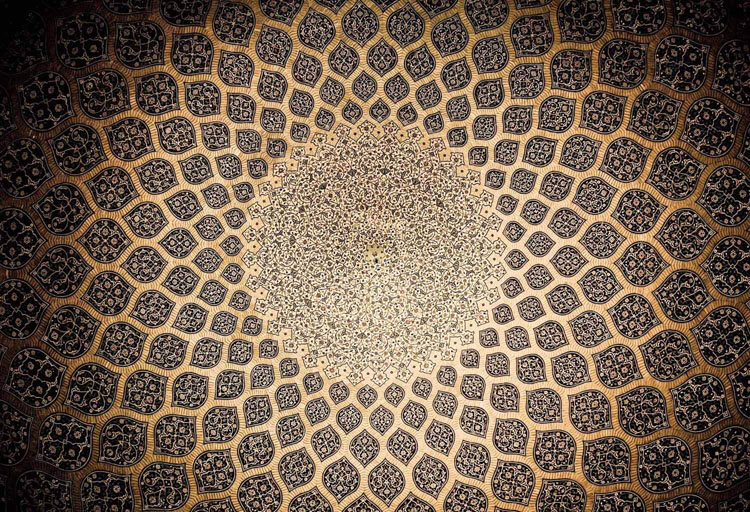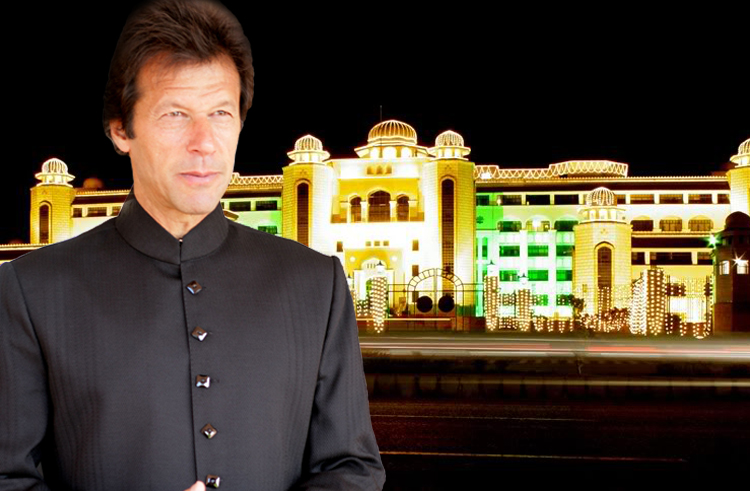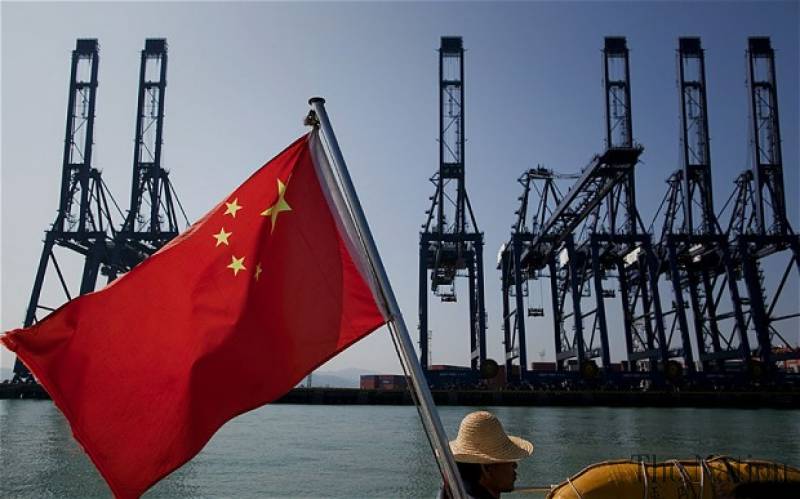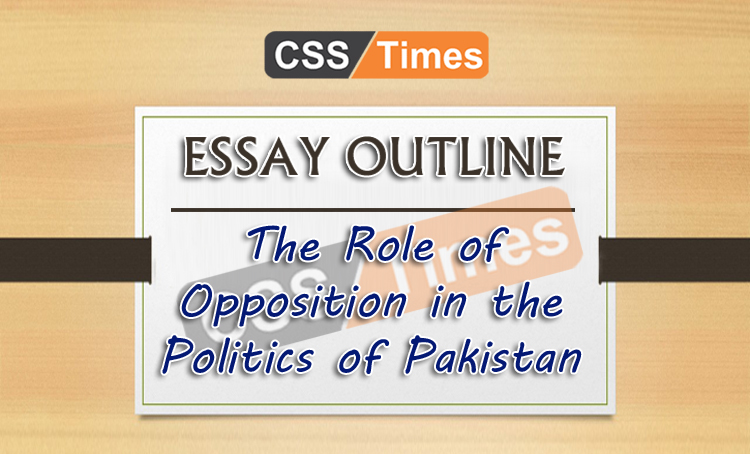“Let China sleep, for when she wakes, she will shake the world,” Napoleon’s words seem spookily veracious today, as the shock waves from China’s awakening echo around the globe.
Ever since the Asian Dragon has risen it has been expanding its wings in dabbling Asian countries by helping them built their finances in projects granted by their government.
Just over half a century ago, China was reeling from one of the most significant economic catastrophes in state history. Today, China has exploded with GDP growth at 6.8% per year making the state the second largest economy of the world. It had lifted more than 600 million people out of poverty and has emerged as the largest trading partner of US, EU, India and Japan. Measured strictly by GDP, China will likely surpass the US within the next few years (Giles).
The most remarkable economic transformation in human history has led to a significant ‘rise of China’ phenomenon, which caused a profound “shift in global dynamics and evolving geopolitics” in a more “south-orientated world” (UN).
China has also broadened its diplomatic activities ever since, playing a key role in international institutions and wielding greater geopolitical influence in Asia and around the world. In the process it has become the second most influential country in the world after the US. For instance, its role in stimulating the world economy and even resolving nuclear issues in the Korean Peninsula and the Persian Gulf has been crucial.
In this new order, China is becoming a more responsible player on the global stage and addressing international issues such as global terrorism, environmental degradation, energy security, international crime and so on.
In political realism, power is the capability to make another state do something it would not otherwise do and vice versa. What makes a state powerful is about its capability of influencing another. In the world of states, this capability is based on both tangible and intangible characteristics of the state. Tangible characteristics include things as state’s size, economy, military, technological development and population. Talking specifically of Asia, China is indeed the ASIAN DRAGON. Ambitiousness, hardworking, national will, the intangible characteristics, also drove China to success.
As power is inflationary, so when countries become stronger, their interest expands beyond their borders, where they must find new ways to protect those interests. China is no exception. Thus, in order to sustain its peaceful rise, it is increasing its influence around the world and South Asia is no different.
The South Asian region, home to one fourth of the world’s population, is one of the least economically integrated regions in the world. Intraregional trade remains well below its potential due to, “historical political tensions and mistrust, with cross-border conflicts and security concerns” (World Bank). Most South Asian countries rely heavily on developed nations as export destinations, and increasingly import from China.
Since 21st century, China has been conducting multi-dimensional cooperation with all of the South Asian countries (Afghanistan, Bangladesh, Bhutan, India, Maldives, Nepal, Pakistan and Sri Lanka). Chinas linkage with South Asian countries expanded to all fields including economic, communication, cultural exchange, energy and the untraditional security cooperation.
China’s major interests in South Asia include promoting stability in both Afghanistan and Pakistan in order to curb the influence of Islamist extremists, and to facilitate trade and energy corridors throughout the region that China can access, that is to increase its presence in the Indian Ocean Region. The Ocean accounts for half the world’s seaborne container traffic, and 70 percent of the total traffic of the world’s petroleum. China considers the Ocean to be a key strategic waterway because a significant portion of its goods and oil transit through the Ocean. China’s South Asian Strategy also focuses on enhancing its influence with other South Asian states as part of a global effort to extend its diplomatic and economic influence.
As China is energy thirsty economic power, it is highly sensitive to the fact that these resources, which are essential to China’s economic productivity could be interdicted by hostile state or non-state actors. So, China seeks greater presence and influence in the Indian Ocean region, primarily to protect the sea lines of communication upon which its economy depends, as well as to expand its influence.
It is in this context that cases such as CPEC can be viewed. The China-Pakistan nexus is by far the most important and dynamic relationship in South Asia , accentuating China’s desire to maintain a foothold in the Indian Ocean. In 2015, China and Pakistan launched the China-Pakistan Economic Corridor (CPEC)—which falls under the OBOR umbrella—with the signing of 49 agreements to finance a variety of projects with a total expected value of $46 billion, including upgrades to Pakistan’s Gwadar Port, oil and gas pipelines, road and railway infrastructure, and a series of energy projects. CPEC aims to link western China by road and rail down to the Gwadar deep water port, located at the edge of the Strait of Hormuz in the Arabian Sea, via 2,000 miles of rail, road, and pipelines.
China’s one of the major interests in South Asia is to promote peace and stability in Afghanistan, which stems in part from its desire to access the country as a gateway to Central Asia and Europe. It is also primarily driven by its desire to prevent conflict from spilling over into western China in the Xinjiang autonomous region as given the presumed link between the Taliban leadership in Afghanistan and the East Turkestan Independence Movement, a Uighur separatist movement in China’s Xinjian province that borders Afghanistan. China hopes that, eventually, long-term stability in Afghanistan will allow it to build railways, roads, electricity, and water projects in the country as part of its Silk Road Economic Belt.
Projects like CPEC, Belt and Road Initiative are the part of the “Chinese dream” that will fulfill China’s plan to become next superpower. Through project like these China is in a way securing a new alternative trade for goods especially oil and gas from Middle East.
China’s one belt and road initiative is the most ambitious infrastructure project in modern history that’s designed to reroute the global trade. This potentially ambitious project covering about 60% of the world’s population, about one-third of the world’s GDP, and about a quarter of all the goods and services the world moves, creating a network of railways, roads, pipelines, and utility grids that would link China and Central Asia, West Asia, and parts of South Asia . “One Belt, One Road” strategy, is expected to relieve China of the “Malacca dilemma”, what then President Hu Jintao in 2003 called China’s overreliance on the Malacca Strait for trade.
While the concerns in Afghanistan persist, China has already become a major investor in Afghanistan, through projects like the Mes Aynak copper mine—a $3.5 billion project in Logar province, the largest direct foreign investment in Afghanistan’s history—particularly due to its considerable supply of rare earth minerals and its potential as a pathway for Chinese trade into Central Asia.
In the past decade, China has emerged as a top exporter of goods to the region breaking into South Asian markets with its export-led growth strategy. Bangladesh provides the starkest example of this trend. China has become Bangladesh’s top trading partner in 2015, imports from China (including Hong Kong) were 27 percent of Bangladesh’s total imports. China offers cheaper Chinese products (especially cotton and other fabrics central to Bangladesh’s garment industry) without the visa, transport, and customs challenges. Besides, Bangladesh and China hold regular military exchanges, Beijing has provided Dhaka with five maritime patrol vessels, two small warships, 44 tanks, and 16 fighter jets, as well as surface-to-air and anti-ship missiles. Bangladesh has even allocated two special economic zones for Chinese investors in Chittagong, a major port, and Dhaka, the capital. In return China played a large role in developing and modernizing Bangladesh’s port at Chittagong.
The Chinese dragon has advanced swiftly in Sri Lanka, which is located on a key trade route in the Indian Ocean. China’s exports to Sri Lanka are rising fast. Other than Pakistan, Sri Lanka has been the leading beneficiary of Chinese infrastructure investment in South Asia , with nearly $15 billion worth of projects between 2009 and 2014. More than the bilateral trade, it is the growing Chinese investment in infrastructure that has enhanced China’s influence in Sri Lanka. Some of the Chinese investments in Sri Lanka are the construction of Puttalam Coal Power Plant, Supreme Court Complex, Gingang Flood Protection Scheme, a US$1 .4 billion plan to build an artificial island off Colombo, designed with malls, hotels and marinas, a project that seeks to rival Singapore and Dubai. On other hand to facilitate Chinese investment, the Sri Lankan Board of Investment has taken various steps like demarcating a separate zone for Chinese investors at Mirigama (China is the first country to have an Exclusive Economic Zone – EEZ – in Sri Lanka), establishing an investment promotion office in Shanghai, and earmarking a special five year visa for investors. Sri Lanka had even allowed Chinese submarines to dock at Colombo port twice in late 2014.
Nepal showcases another facet of China’s growing influence in South Asia . Unlike Sri Lanka and Bangladesh, which give China access to strategically located ports, Nepal is a small, landlocked country. Its location squeezed between Tibet and India makes it an important buffer zone for China. China’s main interest in Nepal also stems from its concern over the large Tibetan refugee community there. Beijing has pressed Kathmandu to tighten its borders with Tibet, which has led to a major decrease in the number of Tibetans able to flee to Nepal in recent years. China is also bolstering trade with Nepal, pursuing road building and hydropower projects and had provided its swift assistance following the devastating earthquake in April 2015. Nepal had also signed several agreements with China, including a permanent arrangement for energy supplies and a transit treaty granting Nepal access to Chinese ports.
China has its influence even in India. India–China economic relations have expanded in recent years. China has captured Indian market not only in the subcontinent but also in India. It is India’s biggest trading partner, with bilateral trade totaling around $71 billion in 2014. Despite the border tensions and maritime competition, India is interested in expanding economic and commercial ties between countries. The two countries had signed 24 agreements and nearly $30 billion worth of business deals. Though India’s trade relationship with China has leapfrogged in the last decade, the corresponding political relationship has been higgledy-piggledy. A section within India (belonging to the strategic community) believes in the outdated “string of pearls” strategy by China and views Beijing as a threat, advocating a confrontational strategy.
India fears that Chinese investment in South Asian ports not only serves Chinese commercial interests, but also facilitates Chinese military goals. India perceives the Chinese presence in South Asian countries as a design to circumvent what was once considered as India’s sphere of influence.
The reason why china is so far successful in influencing south Asia is because of many factors. The one of major reasons are that it has managed to project itself as a disinterested neighbour. China has never interfered with other countries’ internal affairs. Besides unlike the rest of the international community where countries have to meet strict ethical order, China offers billions of dollars mostly in loans with far fewer conditions. BRI has been hit with less democratic countries in the region.
However the challenge for China is to ensure that its ameliorating position benefits all nations. It is high time that the nations of South Asia move beyond mistrust and old paradigms and engage with each other in meaningful and mutually-beneficial ways. This remains the region’s greatest challenge.
Published in: Daily Nation Lahore
The above article can be read for
CSS Current Affairs, CSS International Relations, China Pakistan Relations, China and South Asia





